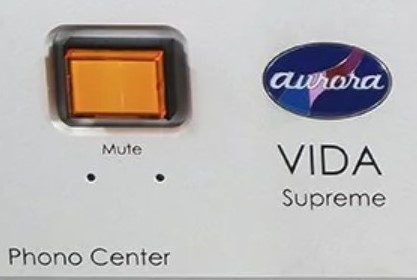“Be careful what you wish for”, goes the old saying. In this case, my wish to hear the top-of-the-line Aurorasound VIDA Supreme phono preamplifier was granted and the listening was all pleasure and no pain. Concluding the review of the Aurorasound VIDA mk.II in January of this year, I noted that wish while also suggesting that the lower cost model performed at such a high level that any improvements would be reference-quality.
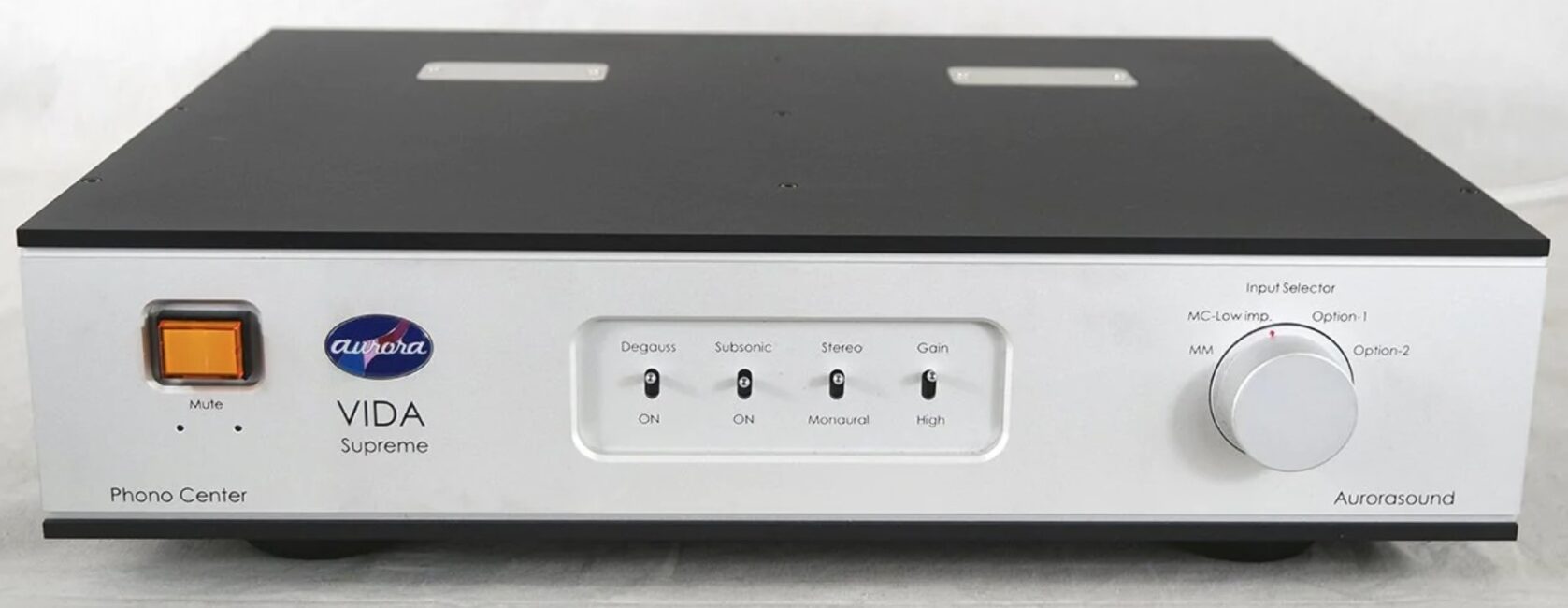
The $12,790 VIDA Supreme adds some welcome features including balanced inputs and outputs, with options to install two extra phono inputs on plug-in cards. The review sample came with the optional MCHA card, $1125, which includes more settings for cartridge loading.
As with the VIDA Mk.II, the VIDA Supreme was auditioned with an Acoustic Signature Montana Neo turntable with Acoustic Signature TA-7000 Neo and Origin Live Agile tonearms. On hand are Acoustic Signature Grip, Stillpoints Ultra-LPI mk2, and Origin Live Gravity record clamps. The best sound is obtained with the Grip clamp sitting atop the Gravity clamp. Other components on hand during the audition and review include ZYX UNIverse Optimum, Miyajima Destiny, and Tzar DST moving coil phono cartridges; BMC MCCI Signature ULN and Simaudio Moon 810LP phono preamplifiers; Soulution 325 with phono and Benchmark HPA4 preamplifiers; digital is handled by a custom Windows 10 computer running JRiver Media Center with a USB-connected Audio-gd RM-7 MK2 and Marantz SA-10 DACs, and RME ADI-Pro 2 Black Edition AD/DAC with external power supply; Valvet E2 SE and Benchmark AHB2 power amplifiers; Alta Audio Celesta FRM-2M and Magico S1 MkII speakers. The Magicos are lightly augmented in the low bass with a pair of JL Audio e110 subwoofers. The audio cabling is Audioquest WEL Signature and Mogami interconnects and speaker cables. USB cables are StraightWire USB-F. Power cords include my DIY power cord, and Straight Wire Pro Thunder. Power protection and purification are provided by a PS Audio Dectet for the preamplifiers and source components, and a PS Audio Quintet for the power amplifiers. The Quintet includes a standard 1/8″ trigger connection enabling remote turn-on and -off of power amplifiers that lack a 12V remote trigger, which is a feature that every modern component should include.
Using a reverse-RIAA box with variable output and also a tuner, the standard 100 hour break-in interval was completed before the audition began. Then it was time to lower the tonearm on a record and hear some music. I was not disappointed. The first impression noticed an enveloping, densely populated sound field that is always a 3-dimensional recreation of the recording space. I want to stress the term “sound field” because the Supreme imbues the music with far more than a simple “sound stage”. Performers occupy a fully developed acoustic space that transcends a simple width-depth description. Stage depth is outstanding, helping the listener’s ability to “look at” a singer. We are off to a very good start.
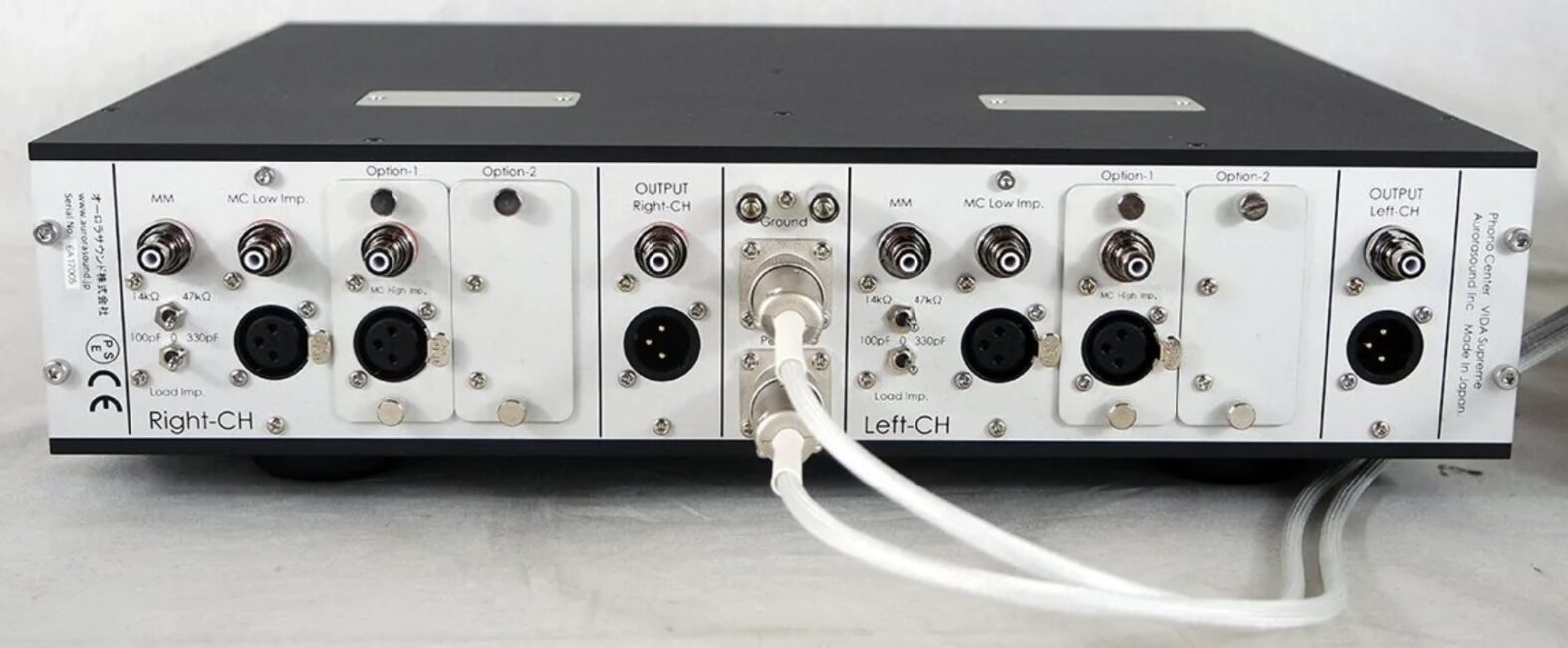
What is really special about this presentation is the rich, almost liquid, density of every sound with a very complete penetration into every note. This is the definition of high resolution. The lower frequencies are special. Listen to the acapella group The Nylons “Dance of Love”. The baritone’s clarity and saturated, fully developed vocals are presented with the highest believability and naturalness. The cymbals are wonderfully clear and precise. The micro-dynamic power and speed delivers the smallest detail with correct impact.
The Aurorasound Supreme delivers a faultless midrange. This is not surprising because the phono preamplifier easily meets the 2 requirements for a successful audio component: high resolution and perfect linearity to carry that resolution equally from the lowest bass to upper treble. There is no highlighting of any small frequency range. The rich and saturated midrange seems to combine the best of solid-state and vacuum tube sound: richness and texture with speed and extension. Back to listening to The Nylons, hear “Crazy in Love” on the Happy Together LP, Atlantic Records OA-0306, 1987. Virtual reality. MIC DROP!
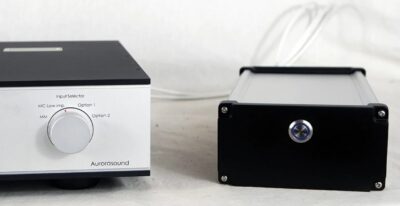 Continuing the excellent bass and midrange performance, the upper frequencies are equally outstanding. The rich tone of the midrange is fully present in the treble range, giving mostly harmonic content the power to make instruments and voices sound very life-like. No one wants a thin and thread-bare treble to emaciate the midrange and leave it sounding artificial. Fortunately, the Supreme never has this failing. The treble is where “the rubber meets the road” to judge the quality of any audio component. This range must be clear, transparent and with extreme resolution or else that component will fail in long term satisfaction. The Supreme is always true to the music, from the lower treble all the way up to beyond the range of hearing.
Continuing the excellent bass and midrange performance, the upper frequencies are equally outstanding. The rich tone of the midrange is fully present in the treble range, giving mostly harmonic content the power to make instruments and voices sound very life-like. No one wants a thin and thread-bare treble to emaciate the midrange and leave it sounding artificial. Fortunately, the Supreme never has this failing. The treble is where “the rubber meets the road” to judge the quality of any audio component. This range must be clear, transparent and with extreme resolution or else that component will fail in long term satisfaction. The Supreme is always true to the music, from the lower treble all the way up to beyond the range of hearing.
The Supreme’s sound is explosively dynamic, fully satisfying both large scale macro- and smaller micro-dynamics. The external power supply is expertly designed to supply any power demands made by the music. The heavy construction, high quality parts, input flexibility, and overall quality of sound all contribute to this reference-grade preamplifier’s sound.
The Supreme has a similar overall tonal balance as the Soulution 325 phono and Simaudio 810LP, both of which have excellent linearity and are slightly on the warm side of neutral. The BMC MCCI Signature ULN is relatively on the cool side of neutral, which enhances the clarity and presence of the upper frequencies.
The MCHA add-in card is a discrete FET and Tarsiers design active head amp with 12 settings for cartridge loading. This was the preferred input because I like to run cartridges at higher than recommended settings for maximum air and extension. The 10 Ohm Tzar DST sounds best when loaded at 1k Ohms and the 16 Ohm Miyajima Destiny seems to prefer 470 Ohms. The standard input only says “for cartridge impedance under 14 Ohms” and while this worked well, the MCHA card includes settings for 6, 12, 24, 47, 120, 240, 360, 470, 1k, 5.8k, 10k and 47k Ohms. Other add-in cards can provide Columbia, RIAA and Decca response curves, or additional MM and MC inputs. There are front-panel switches to select one of 2 gain settings, a degauss cartridge demagnetizer, and a subsonic filter. And like the VIDA mk.II, we see the large yellow Mute switch, a feature that every phono preamp should have. In terms of system compatibility and flexibility, the Supreme is, well, supreme among the competition.
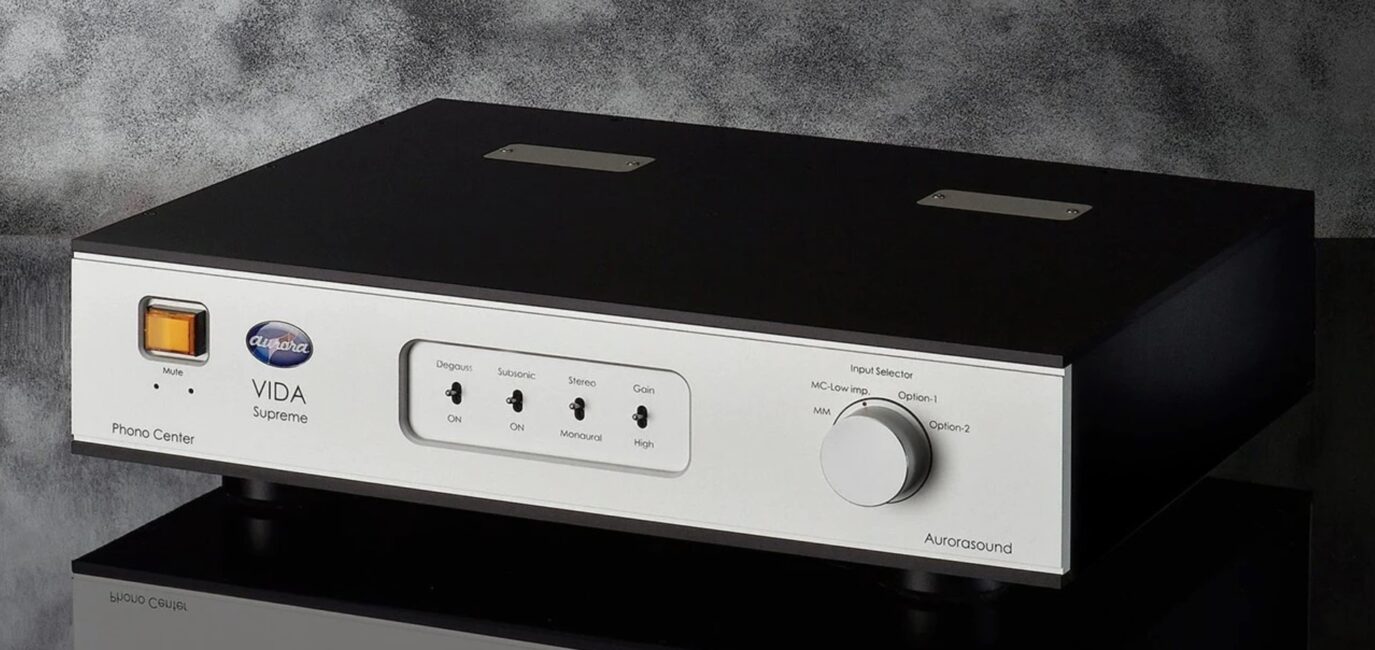
Both the Miyajima Destiny and Tzar DST cartridges, without reservation, love the Supreme. Supreme is the correct name because this component is supremely capable of delivering very satisfying listening sessions. Critical listening is quite a challenge due to the engrossing sound, making it difficult to concentrate on individual aspects of the performance. Before requesting an audition, please know that an in-home audition could well be the beginning of a long-term presence in your audio system. The set-and-forget ease of setup and faultless operation will result in long term musical satisfaction and listening pleasure.
Overall Rating: 10 LPs

Link to distributor: High End Electronics
This review would not have been possible without the very kind support of Alfred Kainz at High End Electronics. Thank you!

